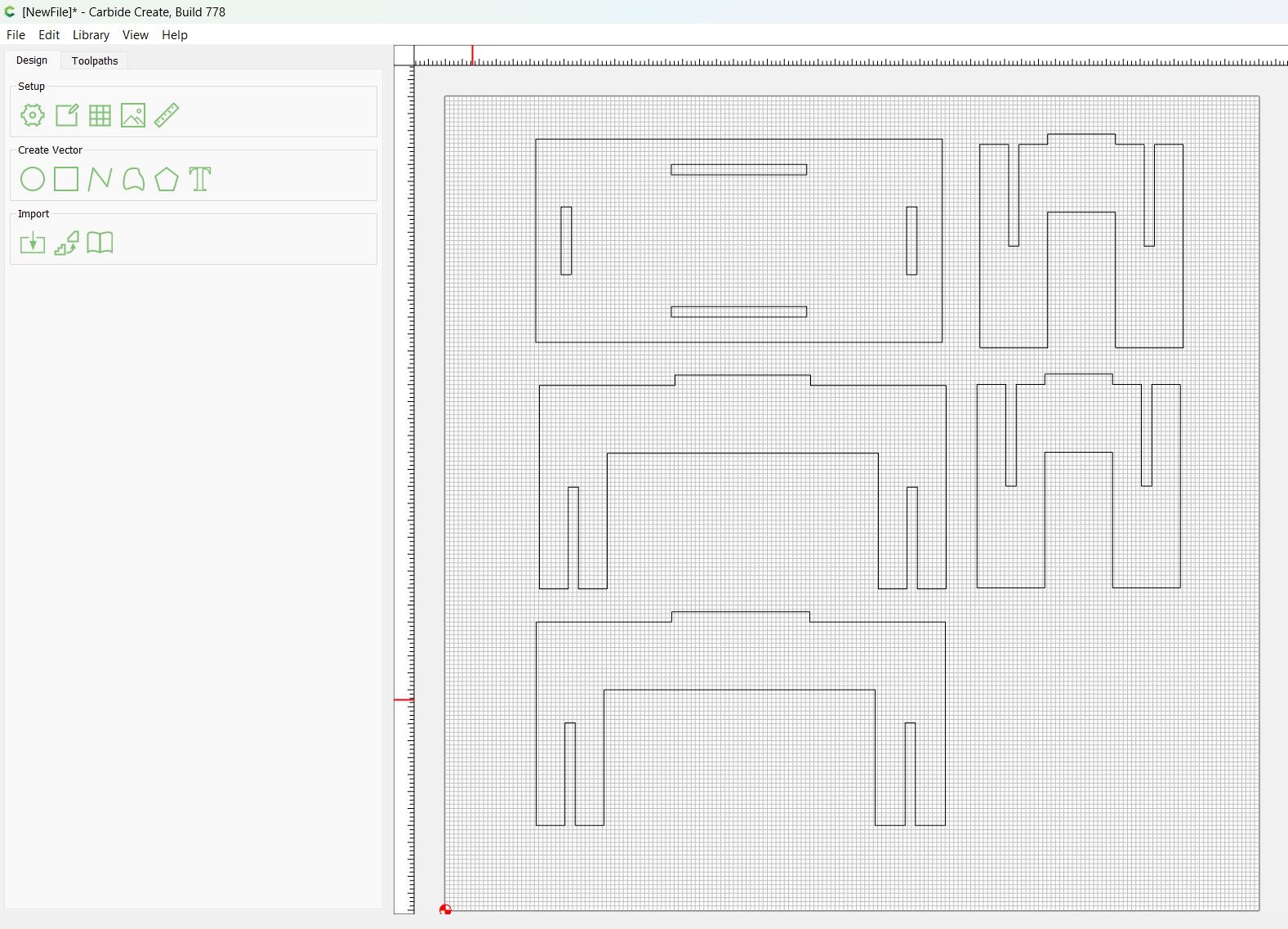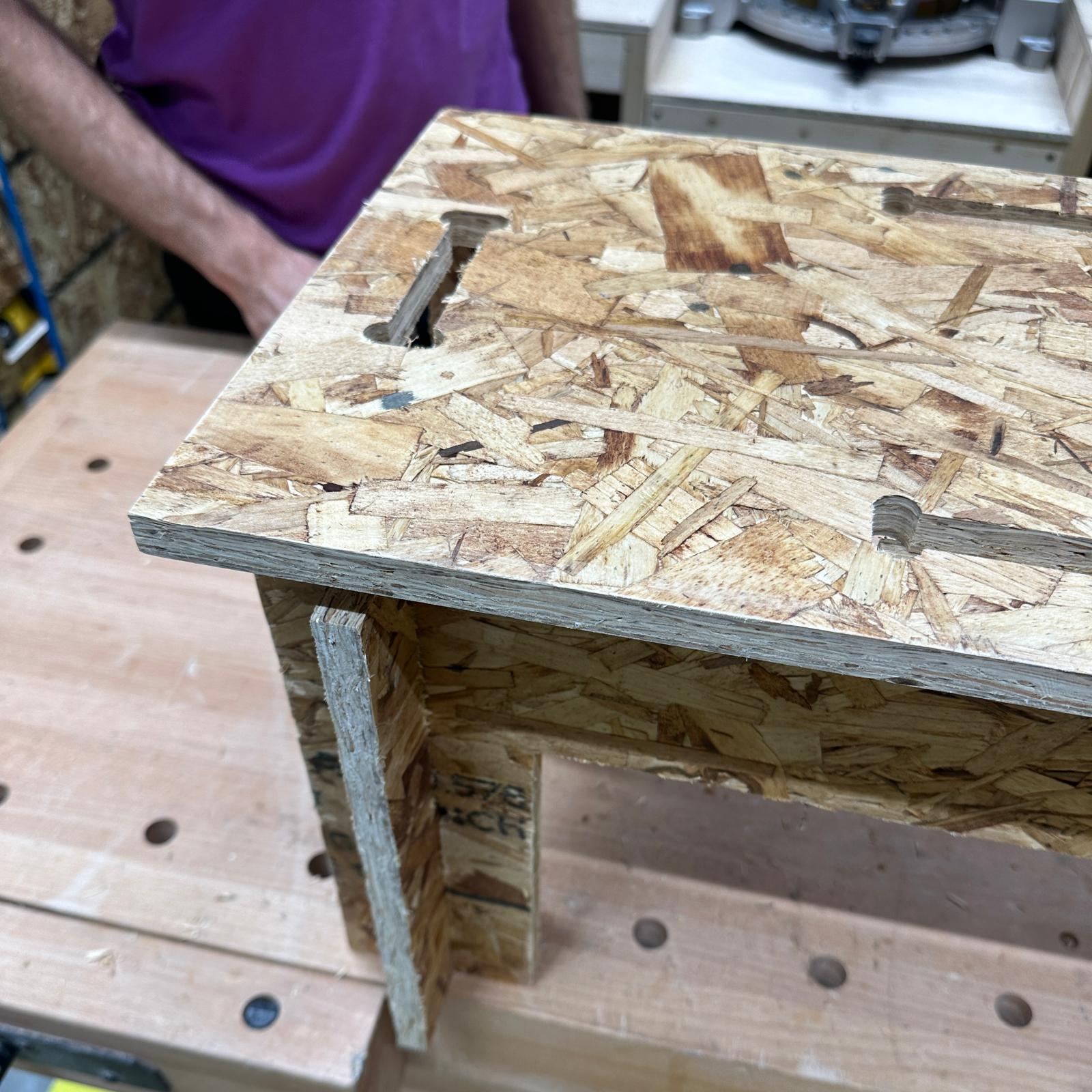This week I made something big!
The plan was to make a chair at first, but the Harvard section seemed to be limited to 48in by 48in wood. I couldn't really make anything all that big with these limitations, so I settled on making a simple, effective, flat-pack stool. I started by designing this in SolidWorks.

Stool design in SolidWorks.
I imported this to Carbide Create, which is the software that functions with the CNC mill.

Design imported to Carbide Create.
When I arrived to mill it, Joe alerted me to a couple of problems. First, the wood thickness would be 0.61 inches, not 0.5 inches. This required me to go back into SolidWorks and edit my design. I did this quickly, and then addressed the second issue. The right angles in my design couldn't be milled. I would need to make dog-bone shapes so that my components would fit together.

Dog-bone shapes added to design for fitting.
After this, I milled my design. This took about an hour. When it finished, I sanded the rough edges and began to build my stool.
The legs fit together perfectly.

Leg joints fitting together well.
The top, however, did not fit... I was confused at first, but I realized that when I edited my design, I neglected to adjust the distance of the T-joint holes on the seat from the edge of the seat. When accounting for the wood thickness changing from 0.5 to 0.61, I should've moved the holes from 1.5 inches from the edge to 1.695 inches from the edge. Thus, the finished product looked like this:

Misalignment due to unadjusted T-joint holes.
I was able to find a quick and easy fix. The dogbone joints I added had circles of radius 0.13. If I cut from the outside of the dogbone, the distance of the holes in the stool became 1.5 + 0.13 from the edge = 1.63, which was close enough to 1.695 to create a force-fit joint! I used the jigsaw to make this cut.

Stool fixed with adjusted holes for a force fit.